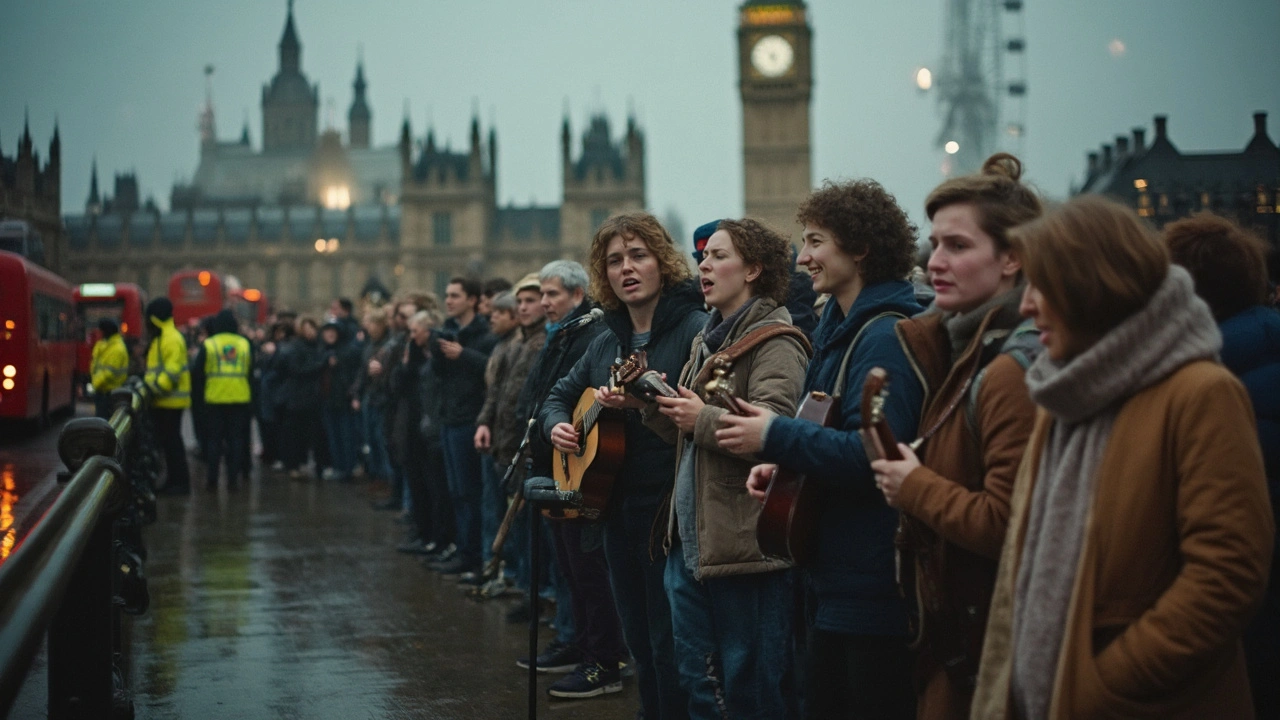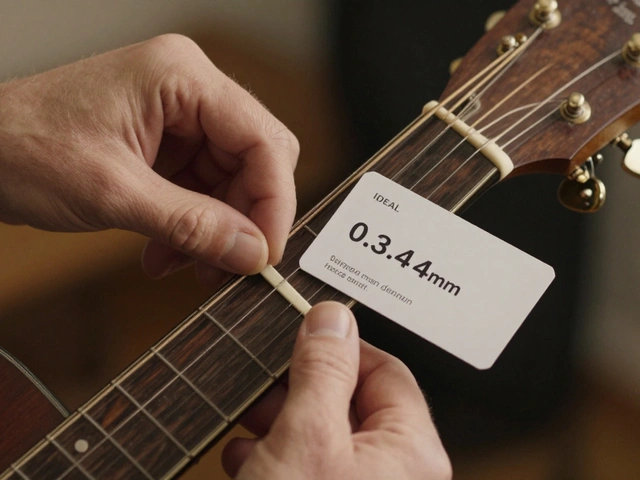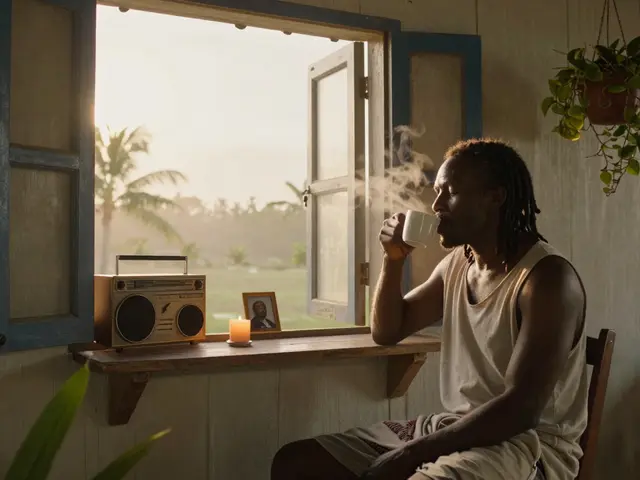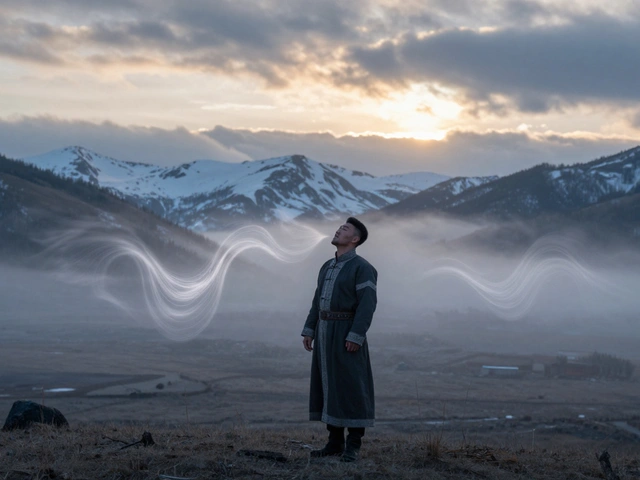Protests rise and fall on energy, memory, and belonging. Songs pull all three together fast. If you’re here to figure out how music actually shifts power in the streets and in policy rooms-and how to put that to work without stepping on cultural toes-you’re in the right place. I’ll show you what makes songs stick in movements, how they’ve tipped the balance in places like the US, Chile, South Africa, and Australia, and how you can use them in your campaign without a big budget or a sound truck.
TL;DR:
- Singing bonds people quickly, lowers fear, and turns complex demands into short, repeatable hooks.
- Across movements-from US civil rights to anti-apartheid-simple, portable songs helped recruit, train nonviolence, and win media frames.
- Use the 3S rule: Simple, Shareable, Singable. Test songs at small meetings before a big march.
- Respect culture and law: credit sources, get permissions when needed, and involve local custodians of tradition.
- Measure impact with real signals: join-in rate, retention, earned media mentions, and post-action morale.
Why songs move crowds and shift power
Start with the body. Group singing synchronizes breath and rhythm. That isn’t just poetic; controlled studies have shown that singing together boosts social bonding and can increase pain tolerance through endorphins (Royal Society Open Science, 2015, E. Pearce et al.). In marches, that translates to people staying longer in cold, heat, or fear. In mass meetings, it turns strangers into a team in minutes.
Now the brain. Movements compete for attention and memory. Short verses and choruses compress complex demands into lines you can carry without a script. “We Shall Overcome” boiled a moral and legal struggle into a promise. “Which Side Are You On?” framed labor conflict as a personal choice. Repetition makes those frames sticky, and call-and-response gives people a safe way to take part before they’re ready to grab a megaphone.
And media. Reporters need quotes, images, and sound. A chant that scans and a song that hits a clean refrain are free press kits. Movements have known this for ages. The Student Nonviolent Coordinating Committee’s Freedom Singers didn’t only lift spirits in churches; their repertoire made for headlines and radio spots that carried beyond the US South (see SNCC Freedom Singers oral histories at the Smithsonian).
There’s also training and safety. In the US South, singing was used to practice nonviolence-holding a steady tempo while marshals rehearsed “link arms, step back, breathe” under stress (Charles Payne, I’ve Got the Light of Freedom, 1995). Songs regulate arousal. They cue when to move and when to still. They calm a line as police pressure builds. They make the plan feel normal.
Culture is power. When a movement uses local songs, in local languages, it says “we belong here.” That matters when authorities frame dissent as foreign. In South Africa, freedom songs in Zulu, Xhosa, and Sotho didn’t just lift morale; they declared ownership of public space under apartheid. In Chile, nueva canción drew on Andean instruments to argue that dignity lived in the people, not in the junta.
Here’s a quick rule I use when I help organizers pick songs: the 3S Rule-Simple, Shareable, Singable.
- Simple: 6-12 words in the chorus, everyday language, one idea per line.
- Shareable: works a cappella, and a 15-second clip carries the heart of it.
- Singable: sits in a comfortable range (A3-D4 for most crowds), steady tempo, repeat-friendly.
One more filter: does the song center the people who are most affected? If not, adapt it or pick another. Music can heal or harm. That choice sits in the lyrics, the language, and who leads the singing.
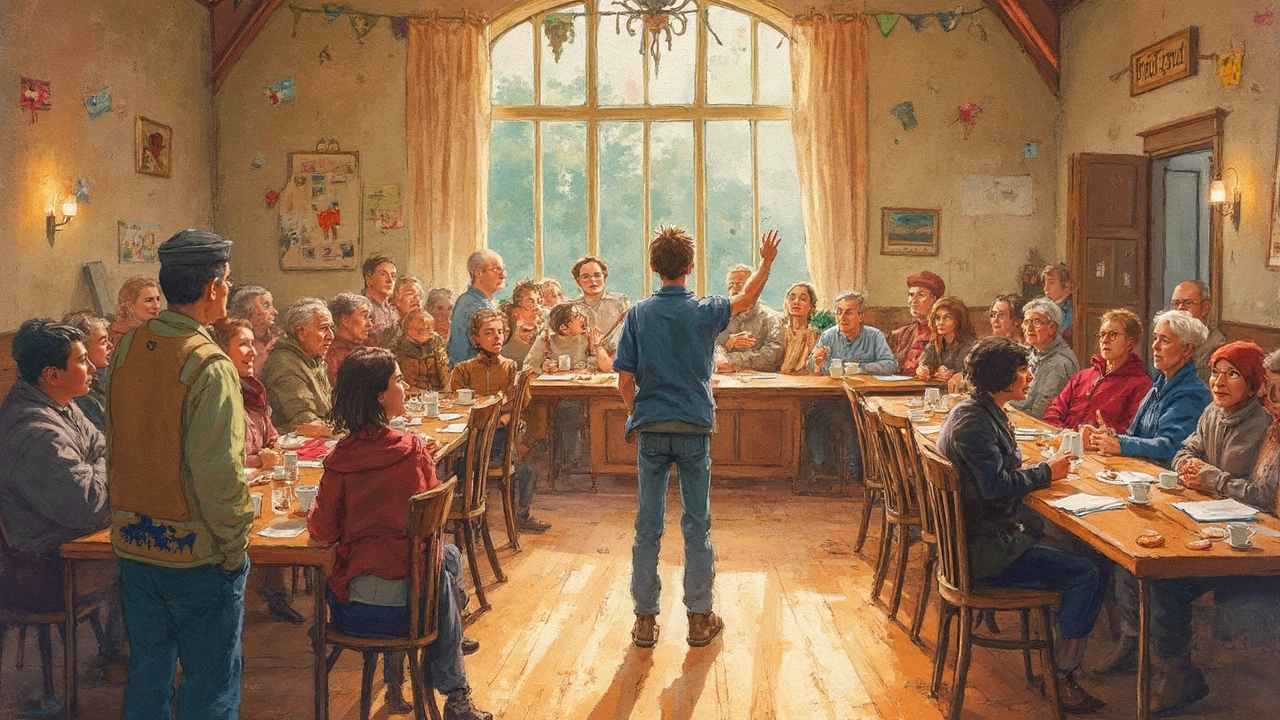
What history actually shows: case studies that changed the temperature
US Civil Rights Movement (1950s-60s). The soundtrack wasn’t background; it was infrastructure. “We Shall Overcome” landed in the movement through the Highlander Folk School, shaped by Zilphia Horton and then Pete Seeger, and carried by activists like Fannie Lou Hamer. The SNCC Freedom Singers toured, raised money, recruited, and normalized courage. At the 1963 March on Washington, an estimated 250,000 people gathered; music held the mood between speeches and framed coverage for audiences far away (National Park Service, contemporary reports).
Latin America’s nueva canción (1960s-70s). Violeta Parra and Víctor Jara in Chile made folk forms carry critiques of inequality and authoritarianism. “El pueblo unido jamás será vencido” became a rallying cry across Spanish-speaking movements. After the 1973 coup, songs spread in exile, protecting memory until it was safe to gather again. Music kept a banned public alive in private and diaspora spaces.
South Africa (1950s-90s). Freedom songs-“Senzeni Na?”, “Nkosi Sikelel’ iAfrika,” “Asimbonanga”-bound protesters across languages. They turned marches into moving choirs and funerals into mobilizations. Miriam Makeba and Hugh Masekela put cultural pressure on international audiences, supporting the sanctions movement. In 1994, a composite anthem that included “Nkosi Sikelel’ iAfrika” marked a negotiated victory.
Ireland and labor. “Joe Hill” and “The Ballad of James Larkin” carried worker stories into pubs and picket lines. In the US coalfields, “Which Side Are You On?” came from Florence Reece’s kitchen during Harlan County’s strikes (1931). The song still reappears, rewritten for teachers, nurses, and tech workers-proof that a strong frame travels across decades.
Bangladesh (1971). During the Liberation War, the Shadhin Bangla Betar Kendro (the clandestine radio) broadcast songs that described the fight and directed morale. The music created shared language for a new country, and for refugees and guerrillas who couldn’t meet in the open.
Australia. “From Little Things Big Things Grow” (Kev Carmody and Paul Kelly, 1991) recounts the Gurindji strike and land-rights win. The song has been used at rallies and in classrooms to teach how patient organizing works here. “Treaty” by Yothu Yindi (1991) fused Yolngu language and rock to push a conversation into radio rotation that politics had parked. When I’ve led small vigils in Adelaide, we’ve used local songs like these to welcome Elders to speak first and to set a respectful tone.
Hong Kong (2019). “Glory to Hong Kong” grew fast because the melody was easy to learn and the lyrics named shared grief and resolve. Though not a traditional folk song, it spread like one-through street performances, phones held high, and crowds taking harmony parts without rehearsal. Hymns like “Sing Hallelujah to the Lord” functioned as protective music early on, signaling peaceful intent in tense spaces.
Ukraine (2022). “Oi u luzi chervona kalyna,” a song with folk roots, resurfaced as a resistance anthem. Soldiers and civilians sang it in trenches and shelters; global artists amplified it. The song did morale work and narrative work at once-locating the present fight inside a long line of identity and struggle.
Black Lives Matter (2014-present). Much of the sound came through hip-hop and R&B, yet the mechanics were old: call-and-response chants, repeatable hooks, and retooled standards. Marchers adapted labor and civil-rights refrains to new lyrics. The chant “Say her name” is pure folk form-portable, brief, and built to center those most affected.
Climate movements. School strikes and climate camps worldwide lean on songs with few chords and strong choruses. Think simple rounds that keep people warm on long walks, and bilingual refrains that welcome migrants and First Nations leaders to the front. The point is stamina and inclusion, not virtuosity.
Here’s a compact view you can scan when you’re planning:
| Movement/Region | Key Song(s) | Approx. Years | What the Music Did | Notes (scale/outcome) |
|---|---|---|---|---|
| US Civil Rights | We Shall Overcome; This Little Light of Mine | 1955-1968 | Bonding, nonviolence training, media framing | 250,000 at 1963 March on Washington; songs led by SNCC Freedom Singers |
| Chile (Nueva Canción) | El pueblo unido; Te recuerdo Amanda | 1965-1973 (and diaspora after) | Identity building, international solidarity | Repression forced songs into exile; memory work sustained opposition |
| South Africa (Anti‑apartheid) | Senzeni Na?; Nkosi Sikelel’ iAfrika; Asimbonanga | 1950s-1994 | Cross‑lingual cohesion, morale, global pressure | Anthem incorporated in 1994; cultural boycott amplified by artists |
| Australia (Land Rights) | From Little Things Big Things Grow; Treaty | 1966-1993 (and teaching after) | Public education, legitimacy for First Nations claims | Song-based storytelling used in rallies and classrooms |
| Hong Kong Protests | Glory to Hong Kong; Sing Hallelujah to the Lord | 2019-2020 | Unity signals, peaceful intent, viral spread | Street choirs and phone-based amplification |
| Ukraine Resistance | Oi u luzi chervona kalyna | 2022-present | Morale, historical framing | Global covers boosted awareness and aid |
A quick note on sources if you want to go deeper: Ron Eyerman and Andrew Jamison’s “Music and Social Movements” (1998) lays out how music helps movements build collective identity. Tia DeNora’s “Music in Everyday Life” (2000) explains how music organizes emotion and action. For civil rights, check the Highlander Research and Education Center archives and the SNCC Digital Gateway. For South Africa, look at Sifiso Ndlovu’s work on struggle songs. These aren’t just citations; they’re handrails for planning.
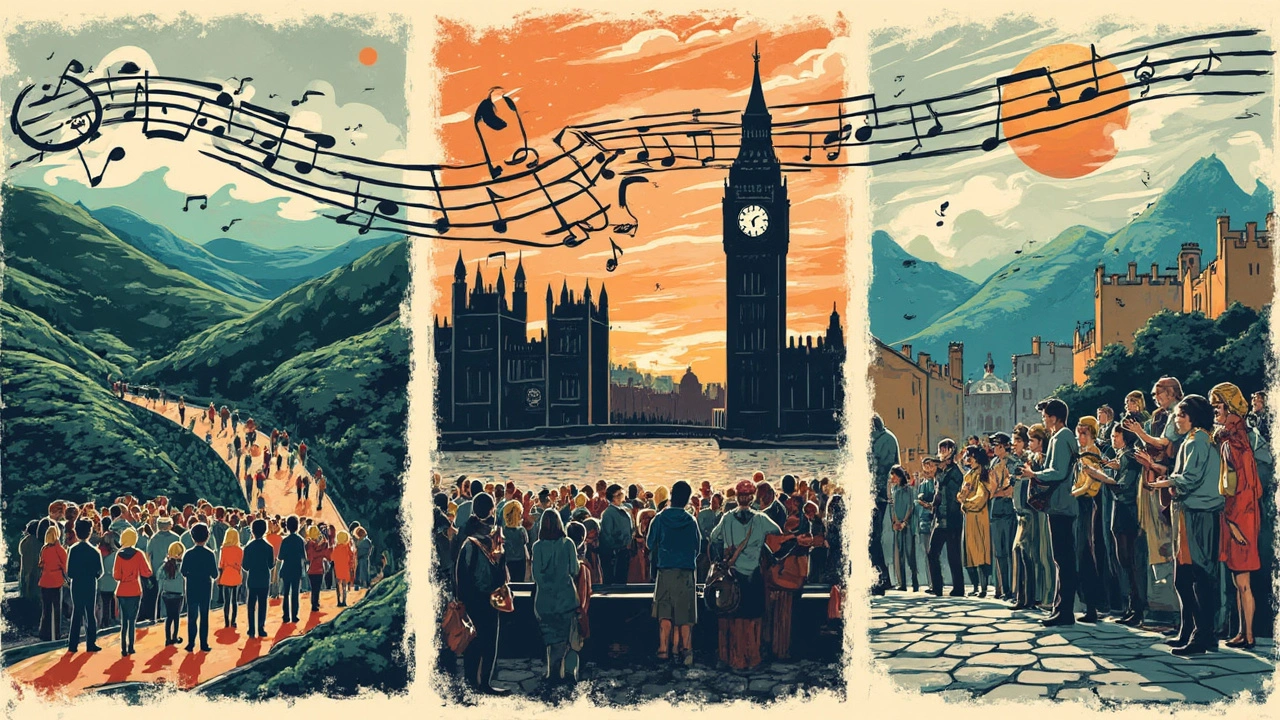
Put songs to work in your campaign: steps, checklists, and guardrails
Step-by-step plan you can run this week:
- Define the job of the song. Is it for courage at a blockade, calm at a vigil, or punchy media coverage at a press conference? One song can’t do all three equally well.
- Pick your repertoire using the 3S Rule. Start with one traditional song locals know, one movement classic you can adapt, and one new piece tied to your demand.
- Adapt lyrics with the people most affected. Keep verses short. Name places, dates, and names that matter. If the song draws on First Nations culture, ask for guidance and consent-and follow it.
- Choose leaders and a pitch. One strong voice with a hand cue beats a PA system you can’t carry. Set the key so most people can reach the top note without strain.
- Rehearse at small meetings. Test the chorus without instruments. Time how fast it catches. If fewer than a third join by the third repeat, simplify the words or slow the tempo.
- Plan sound without overkill. In streets, a light megaphone and human mic often beat heavy gear. Indoors, keep mics few and reliable. Bring spare batteries.
- Do a quick legal check. Traditional songs may be in the public domain, but new lyrics can create derivative works. If you’re streaming or recording, check licenses with your local collecting society (in Australia, APRA AMCOS).
- Prepare for safety. Songs set tempo. Teach marshals a hand signal to cut volume when police give orders. Avoid lyrics that could be twisted as threats.
- Set a digital plan. Decide on a short hashtag. Capture a clean 20-second clip of the chorus. Recruit two people to post from different angles. Always get consent before close-ups, especially of minors or at-risk folks.
Field checklist you can copy into your notes app:
- Two or three songs chosen for different moments (arrival, peak, close)
- Lead sheet with lyrics big enough to read at arm’s length
- Named song leader and backup; pre-agreed hand cues
- Pitch pipe or phone tuner; water for the leader
- Megaphone with spare batteries; noise limits known if required
- Consent plan for filming; safe zone for kids and elders
- Media line prepared that matches the chorus in language
- Post-action debrief prompt: “What landed? What dragged? Whose voices were missing?”
Pro tips from the field:
- Keep choruses under ten words when you need fast uptake. Rounds and call-and-response help latecomers join without confusion.
- Alternate high-energy songs with grounding ones at long actions to save voices and nerves.
- Use place names and local slang. A song with “Kaurna land” in the first line lands differently here in Adelaide than a generic verse.
- Rotate leaders to avoid over-centering one type of voice. Give a mic to youth, elders, and those speaking from lived experience.
- Teach one song in two languages if your crowd is mixed. Even one bilingual line can be a bridge.
Common pitfalls to avoid:
- Appropriation. If a song holds sacred or community-specific meaning, don’t use it publicly without consent and context. Invite custodians to lead, or choose another song.
- Too clever. Puns that thrill musicians often confuse crowds. Save your verse two for the album; keep the street version plain.
- Drowning out key moments. Songs should frame speeches, not eclipse them. Cue silence for testimonies and police interactions.
- Legal blind spots. Streaming covers of copyrighted songs can trigger takedowns. If media matters today, pick public-domain or licensed material.
- Security risks. Chanting a person’s name at the wrong time can expose them. Always ask what’s safe to sing.
How to measure impact without guesswork:
- Join-in rate. Have a spotter estimate what fraction of the crowd sings by the third repeat. Track this across events.
- Retention. Compare average stay time at events with and without organized singing using check-in logs or simple head counts over time.
- Earned media. Count mentions of your song or chant in headlines and broadcasts. Short, quotable refrains tend to show up more.
- Morale and safety. Run a one-minute post-action survey: “Did the songs help you feel safer/more ready to return?” Open text answers are gold.
- Digital spread. Track short clips of your chorus across platforms. Look for unique phrases rather than generic chant words so you can find them.
Mini-FAQ:
- Is folk music just acoustic guitars? No. Think function, not genre. It’s music the crowd can carry without gear-call-and-response, work songs, hymns, chants, and simple original pieces.
- Can we change lyrics to old songs? Often yes, but check the status. Traditional songs may be public domain; recent songs may be protected or released under Creative Commons. Credit sources and seek permission when in doubt.
- Will singing make us a target? It depends on context. Singing can signal peaceful intent, which sometimes lowers risk. Use marshals, keep exits clear, and avoid lyrics that could be misread as threats.
- Do pop songs work at protests? Sometimes. If the chorus is short and familiar, it can land. The trade-off is licensing, especially if you stream. Many campaigns write a chorus that nods to a pop hook without copying it.
- How do we avoid cultural harm? Involve people whose culture you’re borrowing from, early. Ask what’s appropriate for public action. Share decision power and credit, not just the mic.
Next steps and troubleshooting by role:
- Grassroots organizer with no budget: Host a one-hour song circle the night before your action; record voice notes of three choruses; print a one-page lyric sheet; assign a song leader and a backup.
- Musician who wants to help: Offer a 20-minute warm-up at the staging area. Bring a capo and be ready to switch keys fast. Learn two rounds and two call-and-response chants so a cappella works if gear fails.
- Educator or student group: Use one class to trace a local movement song’s history, then adapt a verse for today. Invite a community song leader to give feedback before you perform it on campus.
- Communications lead: Align your press quote with the chorus language. Clip a clean, rights-safe 15-second video of the chorus for social. Track media mentions of the refrain.
- Small-town rally: Pick one bilingual line if your town has a large migrant or First Nations community. People drive farther when they feel seen.
- Online-only action: Host a live teach-in where you teach a two-line chorus and ask viewers to duet or stitch it. Bundle the best ones into a montage for media outreach, with clear credits.
If you want to ground this in scholarship and lived experience: Eyerman and Jamison detail how songs help build collective identity; Payne shows how singing trained nonviolence; DeNora maps music to everyday action. Then talk to local union choirs, faith choirs, school music teachers, and First Nations song leaders. They carry the maps of what your place will sing when it matters.
One last nudge: the best movement songs aren’t flawless; they’re alive. Test, tweak, and hand them around. If a chorus gets simpler after three rallies, that’s a win. If a verse shifts to include a new demand, that’s the movement thinking out loud. And if your song helps one more person stay in the line when fear hits, that’s impact you can feel before any graph shows it.

